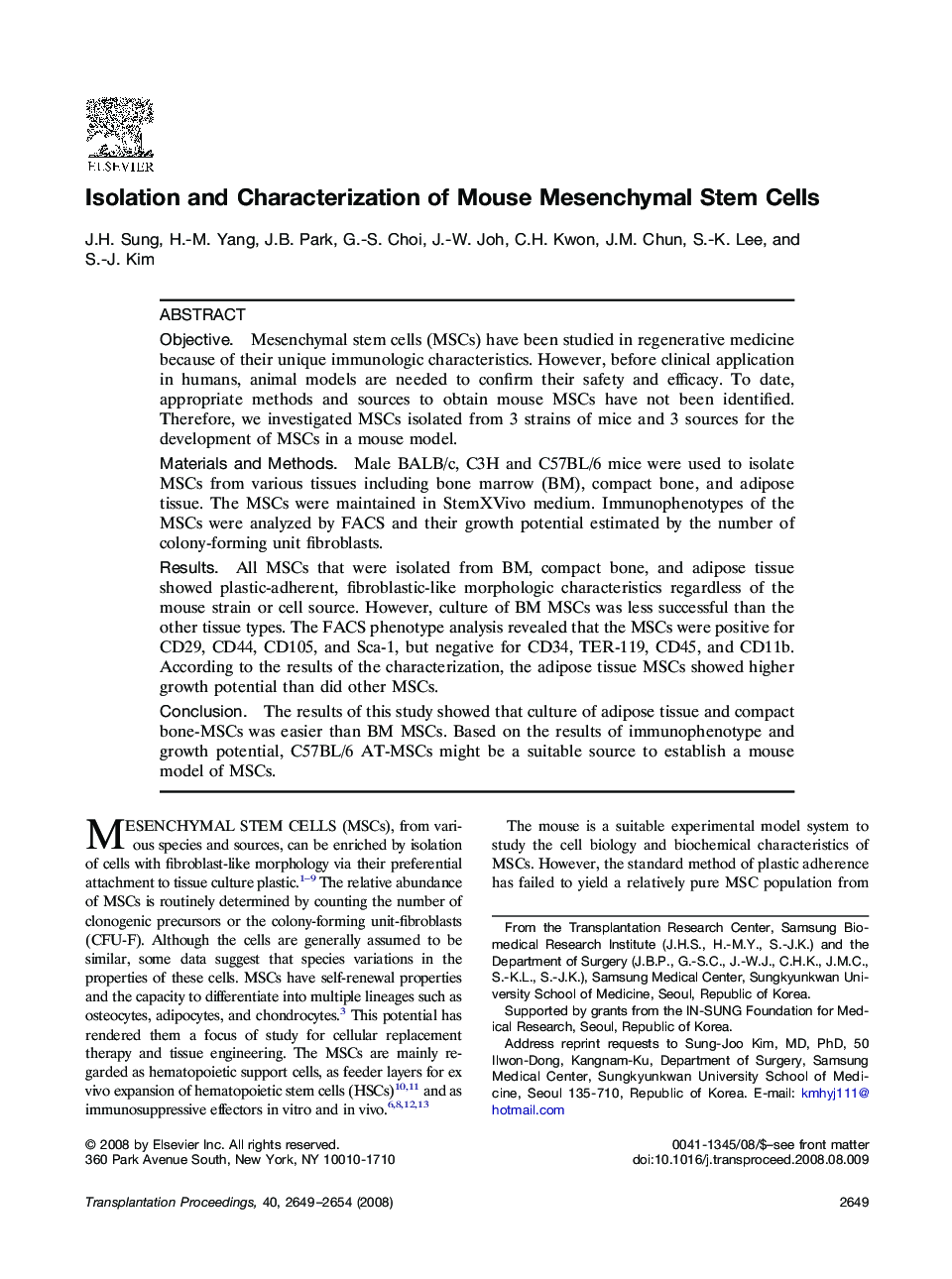| Article ID | Journal | Published Year | Pages | File Type |
|---|---|---|---|---|
| 4262024 | Transplantation Proceedings | 2008 | 6 Pages |
ObjectiveMesenchymal stem cells (MSCs) have been studied in regenerative medicine because of their unique immunologic characteristics. However, before clinical application in humans, animal models are needed to confirm their safety and efficacy. To date, appropriate methods and sources to obtain mouse MSCs have not been identified. Therefore, we investigated MSCs isolated from 3 strains of mice and 3 sources for the development of MSCs in a mouse model.Materials and MethodsMale BALB/c, C3H and C57BL/6 mice were used to isolate MSCs from various tissues including bone marrow (BM), compact bone, and adipose tissue. The MSCs were maintained in StemXVivo medium. Immunophenotypes of the MSCs were analyzed by FACS and their growth potential estimated by the number of colony-forming unit fibroblasts.ResultsAll MSCs that were isolated from BM, compact bone, and adipose tissue showed plastic-adherent, fibroblastic-like morphologic characteristics regardless of the mouse strain or cell source. However, culture of BM MSCs was less successful than the other tissue types. The FACS phenotype analysis revealed that the MSCs were positive for CD29, CD44, CD105, and Sca-1, but negative for CD34, TER-119, CD45, and CD11b. According to the results of the characterization, the adipose tissue MSCs showed higher growth potential than did other MSCs.ConclusionThe results of this study showed that culture of adipose tissue and compact bone-MSCs was easier than BM MSCs. Based on the results of immunophenotype and growth potential, C57BL/6 AT-MSCs might be a suitable source to establish a mouse model of MSCs.
